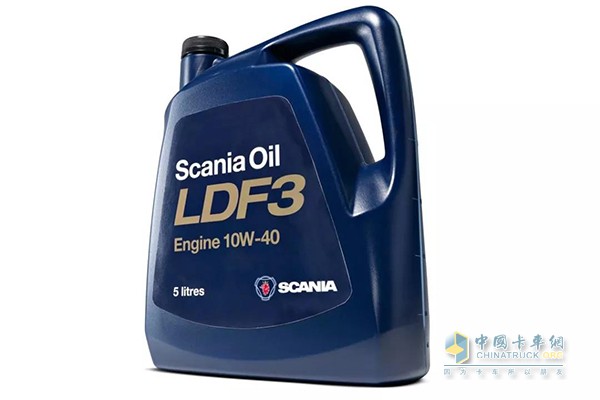Minimize friction and wear - ensure that no parts are prematurely ground Protects post-processing systems such as catalytic converters and particle traps Excellent temperature resistance - viscosity can be kept constant at any temperature. Excellent cleaning ability - Contains stabilizers such as antioxidants to prevent carbon deposits. Compatible with different materials for engines and gearboxes - compatible with different materials such as steel, aluminum, polymers, electronic components. Non-toxic and harmless--From production to use, every link needs to be safe and not harmful to health. An excellent lubricant not only requires the power system to operate optimally, but also the best overall operational economy. To this end, the Scania Research Laboratory launched a special lubricant specification and test program twenty years ago. Scania collects data from more than 800,000 vehicles and 250,000 connected vehicles to understand how Scania lubricants work and keep improving. So, what are the differences between Scania lubricants compared to other commercially available lubricants? 1. Strict field test standards Scania has always insisted on being regarded by the lubricant industry as a highly rigorous standard – the long oil change interval field test standard, referred to as LDF. The long oil change interval means that the lubricant and engine need to be tested based on twice the recommended mileage. If deposits or wear are found, even the slightest signs will not pass the Scania test. Only a small fraction of all tested lubricants were approved as Scania lubricants. 2. Tailored for Scania vehicles Compared to common commercial lubricants, Scania Lubricants is the only lubricant that has been tested with Scania vehicles to obtain the correct assessment of the suitability of the Scania powertrain. It takes two to three years to develop a lubricant that meets Scania requirements. 3. Lubricant formula with unique code To control the quality of Scania lubricants, each Scania lubricant formulation accurately defines all the ingredients that must be used, including not only additive packages and viscosity modifiers, but also base stocks, which are awarded a unique code. Only the preparation code approved by the Scania R&D department can be used to dispense Scania lubricants. 4. Strictly control the supplier's production process As with all Scania parts, the quality of the lubricant is strictly monitored by Scania. The Scania Quality Assurance Department (SQA) inspects each production batch of lubricant. 5. Selected suppliers and continuous evaluation Scania is very cautious about supplier selection. Supplier companies must be rigorously screened by Scania Purchasing and continue to evaluate them to ensure consistent Scania lubricants. 6. Long-term commitment to travel, research and development cooperation with suppliers Scania expects suppliers to fulfill their long-term commitments, and Scania is committed to long-term research and development cooperation with lubricant suppliers and specialty additives companies. These mean that the quality of the lubricant is continuously improved and continues to meet the increasingly stringent requirements of Scania's latest powertrain. 7. Always meet specifications Lubricant specifications include industry specifications developed by industry associations such as ACEA (European Automobile Manufacturers Association), API (American Petroleum Institute) and JAMA (Japan Automobile Manufacturers Association) and OEM specifications approved by individual vehicle manufacturers. Most importantly, unlike the oils tested by Scania, other OEM specifications do not include requirements for performing field tests. The Scania lubricant specification is considered by the lubricant industry to be a highly demanding standard and is very difficult to pass. Scania lubricants are undoubtedly approved for Scania vehicles. The use of Scania lubricants will leave you with no worries and no risk of filling the wrong lubricants into the vehicle. 8. Help the vehicle achieve the best TOE Suppose you choose between two different starting lubricants: one is cheaper and may be half the price of Scania lubricants. However, if you choose a cheaper lubricant, you may have to replace the cheaper lubricant more often, resulting in increased downtime. Compared to cheaper lubricants, Scania's lubricant replacement intervals are at least doubled, resulting in lower fuel consumption and better protection of the performance and service life of the aftertreatment system components. All in all, this means that the cost savings you can get from buying cheap lubricants will quickly run out, in part because of more frequent lubricant changes and more maintenance and repairs, resulting in increased fuel consumption. This is the essence of Scania lubricants, helping any vehicle manufacturer achieve the best TOE. In summary, the lubricants tailored for Scania vehicles enable Scania hardware to deliver superior performance while minimizing fuel consumption. Scania's R&D department works closely with its partner suppliers to ensure that the lubricants are perfectly matched to the Scania engine and gearbox – now and in the future. Cold Drawn Seamless Steel Tube,Carbon Steel Seamless Steel Tube,Cold Finished Seamless Steel Tube,ASTM Seamless Steel Tube Shandong Rizhaoxin Metal Products Co., Ltd. , https://www.changyimetal.com Scania special lubricant
Scania special lubricant
Because it is special, it is more suitable for Scania lubricants.
With the continuous development of technology, the power system has become more and more complicated, the tolerance of power system components is less than one thousandth of a millimeter, and some parts are made of new materials with strict requirements. The development of engines and gearboxes has placed new demands on lubricants. Lubricants need to maximize power system performance and durability. Therefore, excellent lubricants need to have the following effects and qualities: